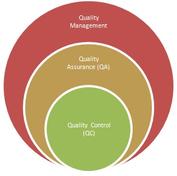Flow Meter vs. Flow Switch: Key Differences Explained
Understand the core differences between flow meters, which measure flow rate, and flow switches, which detect the presence or absence of flow.
Showing 20 posts (Page 2 of 4)
Advertisement
Understand the core differences between flow meters, which measure flow rate, and flow switches, which detect the presence or absence of flow.
Understand the differences between flow meters and flow transmitters, their functions, outputs, and use cases in flow measurement systems.

This article explains the difference between First Null Beamwidth (FNBW) and Half Power Beamwidth (HPBW) in antenna radiation patterns, and how they relate to antenna directivity and resolution.

This article explains the differences between GWFI and GWIT in glow wire testing, crucial for assessing material flammability in product safety.

Explore the key differences between IDE and SATA storage interfaces, including speed, hot-plugging, cable types, and airflow.

This article explains the difference between sensitivity and linearity in measurement instruments, highlighting their importance in accurate measurements.
This article explains the difference between lux and lumens, two key measurements in lighting, and how they relate to light intensity and total light output.

Explore the benefits and drawbacks of using Linear Variable Differential Transformers (LVDTs) for displacement measurements.

This article compares mechanical and electrical tachometers, focusing on their operating principles, components, and differences in accuracy and maintenance.

Explore the differences between MHCP, MSCP, and MHSCP, three key illumination parameters, and their significance in light measurement.

This article compares MIPI CSI and MIPI DSI interfaces, explaining their purposes, features, and key differences in mobile device applications.

A glossary of common terms used with network analyzers, including transmission coefficient, insertion loss, gain, reflection coefficient, return loss, and S-parameters.
This article explains the nominal ratio of instrument transformers, a key parameter for understanding CTs and PTs.

This article explains the concepts of Optical Extinction Ratio (OER) and Polarization Extinction Ratio (PER), their definitions, and calculation formulas.

Explore the differences between percent flicker and flicker index, two key metrics for quantifying light flicker.

Explains the concepts of period and frequency in alternating waveforms, their relationship, and how to convert between them.

Explore the differences between pH sensor probes and pH meters, understanding their distinct roles in measuring acidity or alkalinity.

Understand the difference between primary and secondary transducers in measurement systems, their roles, and examples.
Explore the core differences between PXI and PCI bus standards, focusing on their applications in instrumentation and computing.

This article clarifies the distinctions between Quality Assurance (QA) and Quality Control (QC) and their roles within a Quality Management System (QMS).
Advertisement